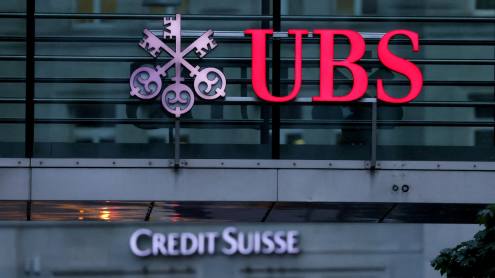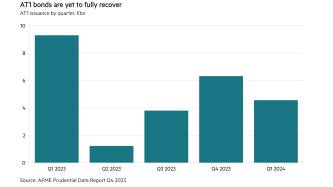In the summer of 2011, when the eurozone-crisis was in full swing, 10-year Irish bonds were yielding more than 14%. Ireland had just been rescued by a €67.5bn loan package from the EU and the International Monetary Fund (IMF), and the country’s woes were compounded by bad behaviour around the eurozone periphery.
But sentiment has changed dramatically over the past two-and-a-half years. In December, Ireland formally exited its rescue programme from the European Central Bank, the European Commission and the IMF – the Troika – and in January, the country became the first European sovereign to tap the syndicated bond market in 2014, launching a €3.75bn 10-year transaction yielding just 3.54%.
Editor's choice
Ireland was not in urgent need of funds, having accrued a cash balance of €20bn by the end of 2013. But investor reaction to its withdrawal from the Troika programme had been positive and Oliver Whelan, director of funding and debt management at Ireland’s National Treasury Management Agency (NTMA), wanted solid proof that Ireland had moved on.
“It was necessary for us to display that we had full market access and coming in the first week of January gave us an early-mover advantage,” says Mr Whelan. “We also had a €2.5bn bond that was set to mature on January 15, so net-net the deal did not increase our cash balances significantly.”
As part of its recovery plan, Ireland ultimately intends to return to the auction market. Initially, however, the NTMA felt a syndicated transaction was more appropriate. “We wanted to start with a syndication to build up liquidity and then to auction bonds at intervals during the year. It is all part of the normalisation process,” says Mr Whelan.
Constant contact
Ireland did issue two syndicated offerings in 2013 – a €2.5bn tap of an existing 2017 bond in January and a €5bn 10-year deal in March – but those were launched when the country was still benefiting from EU and IMF support. “Last year’s transactions could be characterised as almost opportunistic. They were a step on the road to normalising our market access. This year is very different,” says Mr Whelan.
The NTMA prides itself on maintaining regular contact with investors and it has 18 primary dealers, so this year it was able to move quickly when the time was right. “We have been engaged in an active and prolonged investor relations programme. We’ve travelled near and far to meet investors, and let them know our plans so we knew they would not be surprised by our deal. It was also easy for us to choose our bookrunners as we have a top-class team of primary dealers who we keep in close contact with,” says Mr Whelan.
Barclays, Citi, Danske Bank, Davy, Deutsche Bank and Morgan Stanley were mandated as bookrunners on January 6 and the news was made public that afternoon to allow investors time to consider the deal. At 8am the following morning the transaction was launched with a guide price of 150 basis points (bps) over mid-swaps. Ireland was thinking of raising about €3bn but by 8.45am, when the books formally opened, the deal had amassed more than €9bn of interest so price guidance was reduced to 145bps over mid-swaps. Half an hour later, the spread was cut by a further 5bps but interest continued to pour in and when the books finally closed at 9.30am, there were more than €14bn of orders.
“We were delighted by the response, particularly the number of orders and the quality of the book,” says Mr Whelan. “We initially raised the size to €3.5bn but then went up to €3.75bn as some very good names wanted more paper.”
Almost 400 investors participated in the deal, more than 80% of whom came from outside Ireland. About one-quarter of the paper was bought by UK investors, but there was also strong representation from the Nordics, North America and German-speaking Europe.
Return to investment grade
The response was particularly noteworthy as Ireland still had a sub-investment-grade rating from Moody’s at the time of issue – Ba1 – compared with the investment grade BBB+ from Standard & Poor’s and Fitch. Ten days after the deal was launched, however, Moody’s changed tack, upgrading Ireland to investment-grade status, Baa3.
"The change of view by Moody's, which led it to restore Ireland's investment-grade rating, will open a new and significant cohort of potential investors for Irish government bonds, especially in Asia and the Middle East. The positive outlook by Moody's will be taken by the markets as a clear indication that further improvements to the rating are on the cards and will be positive for the continued performance of our bonds in the market," says Mr Whelan.
Investors reacted swiftly. Bond prices rose, pushing the 10-year bond yield down to just 3.3%, its lowest since before the financial crisis and tangible evidence of how far Ireland has come.
“The entire county has had to make substantial adjustments. We have all worked hard to make this happen. Early on, investors spent most of the time talking about the economy and the work that the government was doing to address our problems. But we gradually built up credibility and, recently, the talk was more about liquidity than credit quality. That was very satisfying,” says Mr Whelan.












